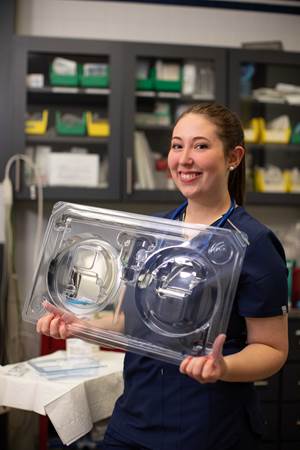Medical Output Remains Strong
Wood on Plastics
Hike of 6% expected this year. Growth will continue, albeit at a slower rate, in years to come.
U.S. output of medical equipment and supplies is expected to expand 6% this year. This follows a very solid gain of 6.5% in 2012 and is much stronger than the predicted rate of expansion for the overall economy and the industrial sector. History indicates that the rapid growth enjoyed by this market during the past two years is unsustainable over the long term. As a result, I look for growth to decelerate to 1% in 2014.
To be clear, I am predicting decelerating growth, not a decline in actual production.
As the accompanying chart illustrates, output levels expanded rapidly throughout 2012 but hit a plateau in the first half of 2013. This data has a clear pattern of two-year cycles, so the timing is right for a cyclical peak in the middle of this year followed by decelerating growth through the end of next year.
I expect the market to remain strong for the foreseeable future. During the past 10 years, production of medical equipment and supplies has registered annual average growth of almost 3%. This compares most favorably with the total U.S. plastics industry, which has suffered an average annual decline of 1% per year during the same time period.
A combination of demographics and rapid technological innovation is driving the long-term trend in output of these products. The population is slowly but steadily expanding, and at the same time is getting older. Access to medical products in countries with developing economies is improving, so export demand continues to climb. In addition, the rate at which new medical products are developed and brought to market in this country has never been higher. So long-term, solid growth in this sector seems assured.
But everyone knows that the most important factor in the immediate outlook for the medical industry is the implementation of the Affordable Care Act (“Obamacare”). As luck would have it, the next projected upswing in our two-year cyclical pattern is timed to occur with the recently revised start of the major provisions in Obamacare.
Originally, they were slated to start at the beginning of 2014, but the Obama administration has decided to push the start out to the beginning of 2015 to allow the states more time to prepare. It will initially expand insurance coverage to many new consumers, and I have no doubt that these new consumers will consume more medical products once they have access to them.
Meantime, manufacturers of plastics medical supplies and equipment will have to devise new strategies for turning a profit in a rapidly changing marketplace. While that is going on, we’ll all be tracking proposed reforms to the corporate tax code. It’s too early to predict how and when this will affect the medical industry.
But keep in mind that this market benefits hugely from the subsidies and tax breaks in the current code, and any reforms that endeavor to lower the overall corporate tax rate but eliminate loopholes and deductions will likely have a big impact on the medical sector.
WHAT THIS MEANS TO YOU
•The main theme of the Affordable Care Act was to increase access to medical care, but so far the biggest impact has been on the cost side. Medical costs must come down, so processors must look for cost-saving opportunities and/or greater production efficiencies wherever possible.
•Most developing economies lack expansive (and expensive) transportation and public works infrastructures. Exports of medical products to these countries will find eager consumers, but the products must be developed and packaged in ways that allow for rustic market conditions.
•The medical industry will be an early adopter of the burgeoning capabilities of additive manufacturing (3D printing).
Related Content
Allegheny Performance Plastics to Enter Health Care Sector
The custom molder has secured multiple projects in health care and will be adding cleanroom and white-room spaces, as well as injection molding machines, in support.
Read MoreCollaboration will bring Recycled Plastic to Medical Device Packaging
Agreement between Eastman and Ethicon will put copolyester derived from recycled materials in sterile barrier applications.
Read MoreRecord Reshoring Rates in 2022
Reshoring and foreign direct investment (FDI) in the third quarter marked their highest ever level, eclipsing the previous record set in the second quarter of 2022.
Read MoreMedical Manufacturer Innovates with Additive Manufacturing and Extrusion Technology Hubs
Spectrum Plastics Group offers customers two technology hubs — one for extrusion, the other for additive manufacturing — to help bring ground-breaking products to market faster.
Read MoreRead Next
Why (and What) You Need to Dry
Other than polyolefins, almost every other polymer exhibits some level of polarity and therefore can absorb a certain amount of moisture from the atmosphere. Here’s a look at some of these materials, and what needs to be done to dry them.
Read MoreHow Polymer Melts in Single-Screw Extruders
Understanding how polymer melts in a single-screw extruder could help you optimize your screw design to eliminate defect-causing solid polymer fragments.
Read More



.png;maxWidth=300;quality=90)















